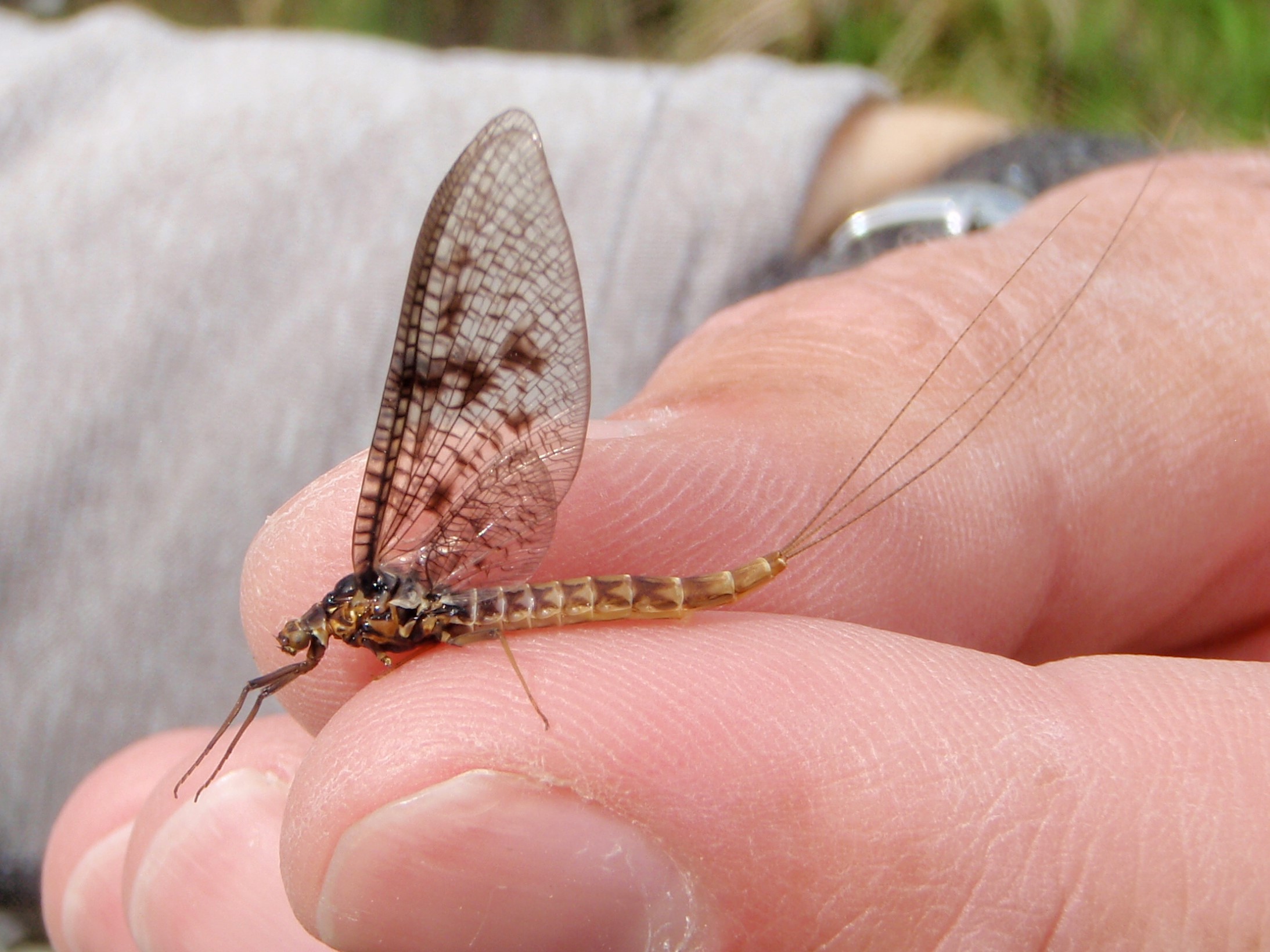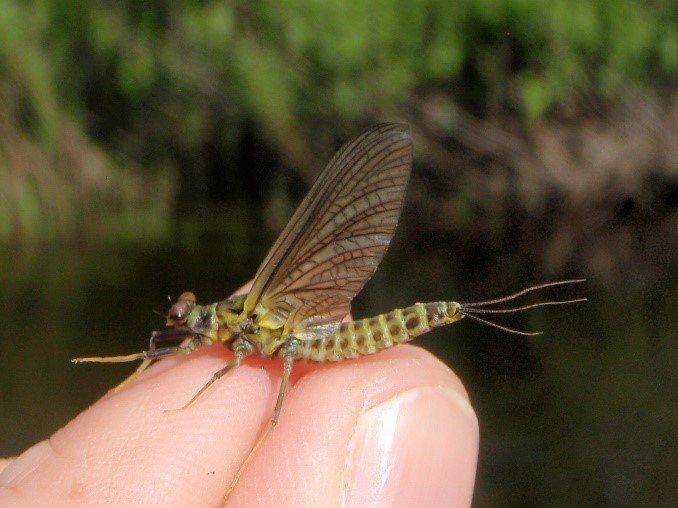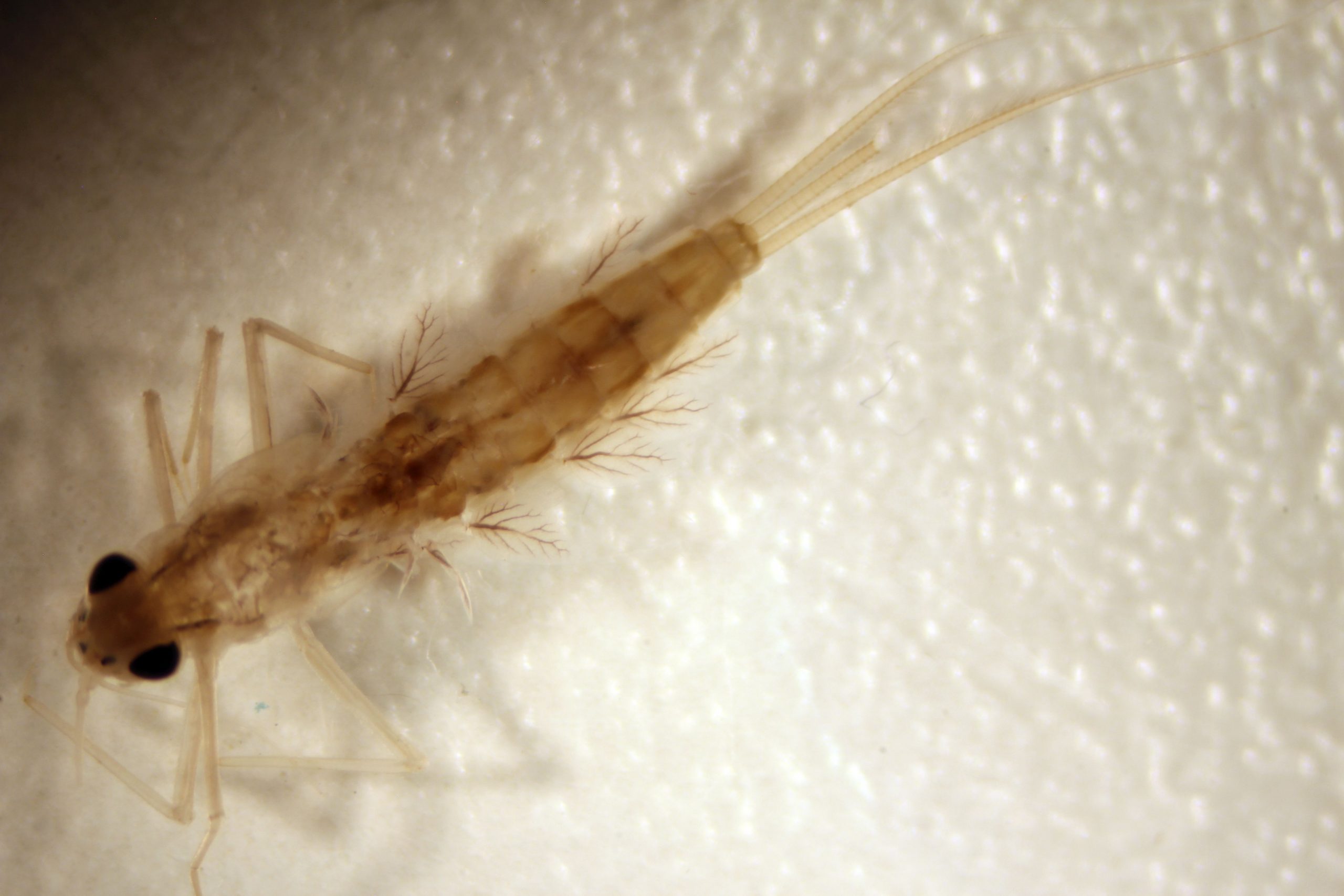34 Paleoptera – Ephemeroptera
Paleoptera
All of the other insects we cover can be grouped in the Pterygota, or winged insects. The last group for this week’s lab is the Paleoptera, or “ancient-winged” insects. These animals are unable to fold their wings at rest. We will look at two orders: Ephemeroptera (mayflies), and Odonata (dragonflies and damselflies).
Ephemeroptera
The Ephemeroptera (“ephemeros” = “short-lived”, “pteros” = “wing”), or mayflies, can be very difficult to key to family as adults and impossible to identify as small nymphs. There are some good keys to mature nymphs. I encourage you to attempt identifying some of the specimens shown in the lab (and, of course, any specimens that you submit with your insect collection assignment!) to the family level, but don’t spend a lot of time on them. If you can identify the order, that is sufficient for the lab exam. In particular, note the large, triangular forewings and smaller hindwings. The hindwings may be completely absent.
Mayflies undergo hemimetabolous development (we will cover that term in the class). In this form of development, the nymph, or immature stage, is entirely aquatic. They are also called “naiads” (= “water spirits”). Nymphs of some species can live for several years. They have flat, feather-like gills along the abdomen. Species from lotic habitats have various adaptations for clinging to rocks and other substrates, and are often dorsoventrally flattened. Once the nymphs have completed development, they swim to the surface and moult to the adult stage. This is one of few insects to moult as an adult (fly fishers: dun moults to spinner). They tend to have very short adult lives, so tend to emerge synchronously in very large numbers to facilitate finding a mate.
The photos of adult Ephemeroptera were kindly provided by Danie Erasmus (an avid fly fisher). Both adults and nymphs must be preserved in ethanol.






Feedback/Errata